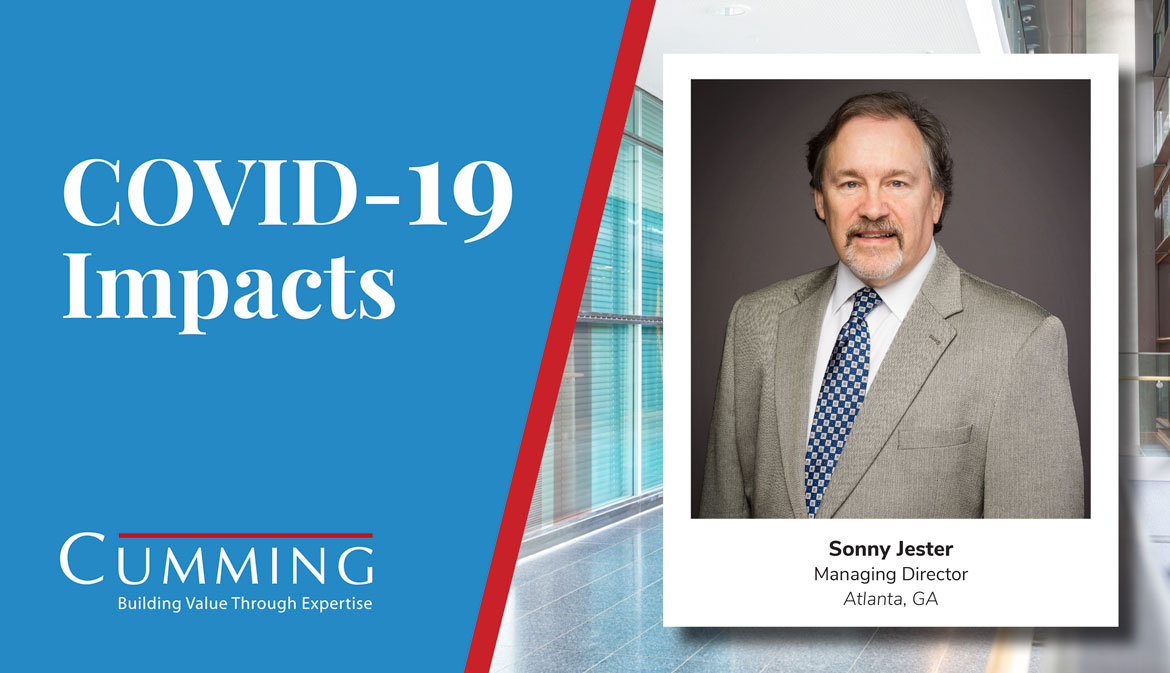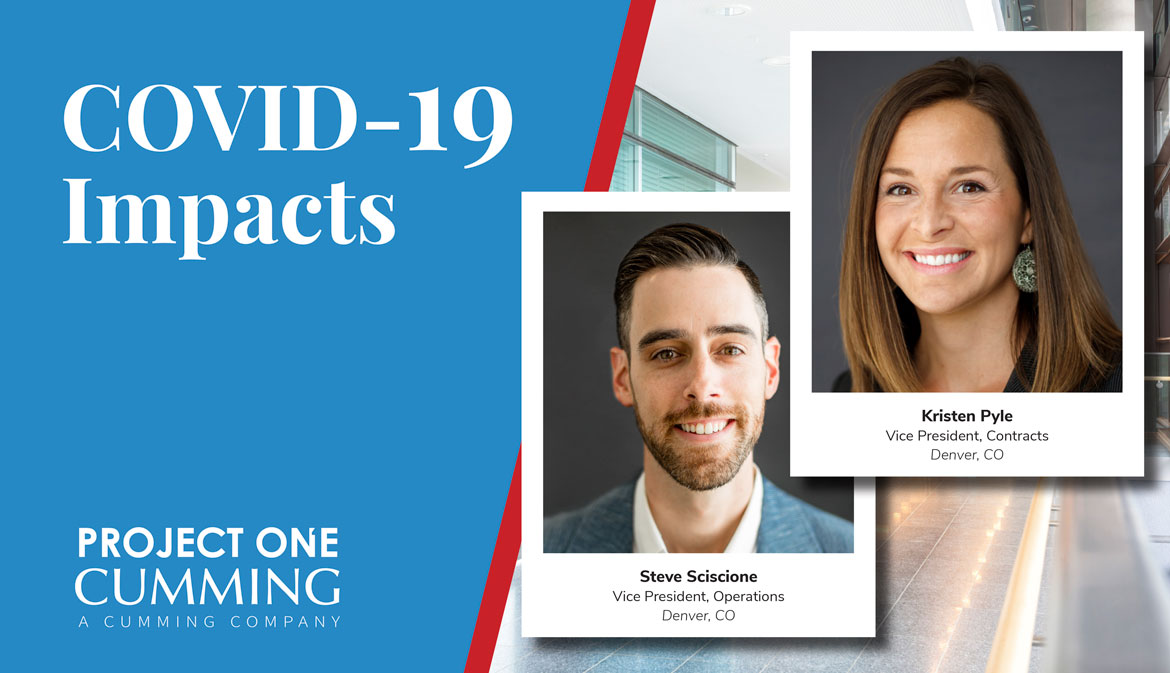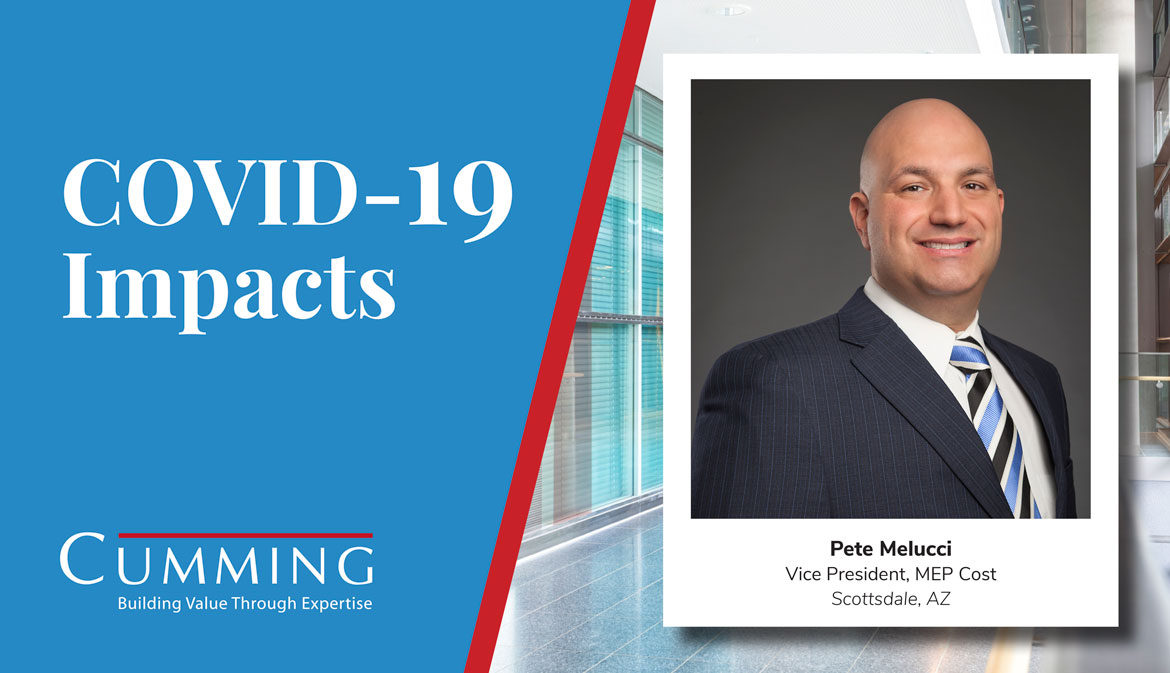Sr. Vice President, PM, Cumming, San Francisco, CA
“When you have to pause a project for reasons beyond your control, it isn’t like pausing a movie and things just stop in place, and you can resume later and pick up right where you left off. It’s more like pulling the brakes on a train.”
Have your daily tasks and/or role changed as a result of the impacts of COVID-19?
It’s definitely added significantly to what I’m doing. There’s my normal role, but on top of that I obviously have a heightened vigilance towards the health and safety of our team members, and we also need to provide clients with advice specific to this situation. It’s like a day job and a night job.
Have you seen any supply chain issues? If so, how are you dealing with those?
We have, but a lot of them haven’t been fully realized yet. Take FF&E, for example. A lot of that comes from overseas suppliers. We’re hearing that those supply chains are gradually being restored, but there was unquestionably some disruption, so we want to anticipate and develop recovery scenarios for possible impacts. To prepare for that, we’ve been looking at creative ways to save time, such as sequencing or phasing and material alternatives.
How are project schedules being impacted? What are some of your solutions to help alleviate schedule issues?
For projects that were required to stop work because of local or statewide orders, yes, there’s been impact for obvious reasons. While those projects are paused, we are running scenarios to prepare for a range of situations. We can’t predict the exact timeline and environment, so we’re considering a variety of outcomes and putting together recovery plans with costs and tradeoffs. We plan with a variety of timeline scenarios, etc. You can’t be too prepared.
How is morale on your projects? Any insight into how to maintain team member morale during a time like this?
I think there’s a strong sense that we’re all in this together. There is a shared understanding and the broader teams are showing a lot of patience. Morale has generally been good, all things considered, because we’ve really come together and are looking out for each other. Everyone is doing everything they can to make the most of this situation. I’ve been on the phone with team members and clients more frequently than ever before.
Have the risk factors on any of your projects changed in type or magnitude? If so, how are those factors being mitigated?
These circumstances present a unique challenge. Usually when there’s an unforeseen disruption, we can see our way to the other side of it. With these circumstances, because they’re unprecedented, we must manage around a lower level of predictability. A lot of the risk comes with making assumptions on a true return to business-as-usual, and what that might look like. When you have to pause a project for reasons beyond your control, it isn’t like pausing a movie and things just stop in place, and you can resume later and pick up right where you left off. It’s more like stopping and then restarting a train — it takes a while to stop and it takes a while to start back up again. There is a lot of effort and planning that goes into pausing and restarting projects responsibly.
Do you see the industry’s approach to construction changing over the long term in response to some of the lessons we’ve learned during this crisis?
I think there will be a balance. Many things will return to ”as before,” but in some cases there will be new programmatic considerations and adaptation to how people work and access services. We could see new design considerations in services, retail, and workplace environments, among others. There is a lot of room for creative approaches there.










